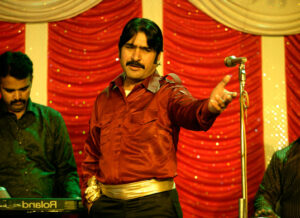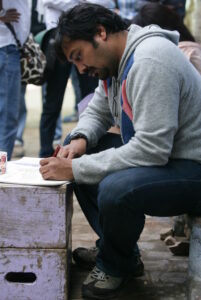Why Gangs of Wasseypur is a Cult Classic
Introduction
In the sprawling expanse of Indian cinema, there are films that come and go, but only a handful etch themselves into the collective consciousness of the masses. Among these rare gems is Anurag Kashyap’s magnum opus, “Gangs of Wasseypur.” Released in 2012, this cinematic masterpiece is far more than just a crime drama; it’s a cultural phenomenon, a cult classic that has achieved immortality in the annals of Indian cinema. But what makes “Gangs of Wasseypur” a cult classic? In this article, we will delve deep into the reasons behind its cult status, exploring the film’s storyline, characters, technical brilliance, and its impact on Indian cinema.

A Tale of Revenge
At its core, “Gangs of Wasseypur” is a sprawling saga of revenge that spans generations. It’s a story that begins with the feud between the Pathan and Qureshi clans in the coal-rich hinterlands of Wasseypur and stretches across three generations, nearly six decades. This epic narrative, inspired by real-life events, is grounded in the socio-political landscape of post-independence India. It captures the intricate web of power, politics, and violence that engulfs the town of Wasseypur.
Complex Characters and Engaging Storytelling
One of the primary reasons for the cult status of “Gangs of Wasseypur” is its rich tapestry of characters. Each character is meticulously crafted, with their own motivations, flaws, and a distinct moral compass. The film isn’t limited to portraying black and white characters; instead, it delves into the morally gray areas of human nature. From the vengeful Faizal Khan (played by Nawazuddin Siddiqui) to the ruthless Ramadhir Singh (played by Tigmanshu Dhulia), every character has depth and complexity that keeps the audience engaged.
The storytelling is equally compelling. Anurag Kashyap’s narrative style is non-linear, jumping back and forth in time, weaving an intricate narrative that slowly unveils the layers of the story. This approach keeps the audience on their toes, making them active participants in unraveling the mysteries of Wasseypur. It’s a storytelling technique that demands the viewer’s full attention, making each viewing a unique experience as new details come to light with every rewatch.

The Nawazuddin Siddiqui Factor
Nawazuddin Siddiqui’s portrayal of Faizal Khan, the film’s central character, is nothing short of iconic. This role catapulted Siddiqui to stardom and established him as one of India’s finest actors. Faizal Khan is a character that exudes vulnerability, complexity, and a certain charm. He’s a reluctant gangster, torn between avenging his father’s death and seeking a peaceful life with his love interest, Mohsina (played by Huma Qureshi). Siddiqui’s ability to convey a wide range of emotions with subtlety and nuance is a testament to his acting prowess. His performance in “Gangs of Wasseypur” is, without a doubt, one of the film’s strongest pillars.
Political Allegory and Social Commentary
Beyond its captivating characters and intricate storyline, “Gangs of Wasseypur” is also a potent political allegory and social commentary. The film’s narrative is interwoven with the changing political landscape of India, reflecting the country’s transition from the socialist era to liberalization. It presents a grim picture of how the nexus between politicians, criminals, and industrialists exploits the common man.
The coal mafia in Wasseypur symbolizes the unscrupulous forces that exploit the land and its people, mirroring the real-life issues faced by many resource-rich regions in India. The film portrays the grim reality of power struggles, corruption, and the collateral damage inflicted on innocent lives.
Dialogues and Regional Flavor
“Gangs of Wasseypur” is celebrated for its unforgettable dialogues, which have become part of the Indian pop culture lexicon. Written by Zeishan Quadri, the dialogues are sharp, witty, and delivered with impeccable timing by the cast. Whether it’s Sardar Khan’s (played by Manoj Bajpayee) charismatic threats or Faizal Khan’s comical one-liners, these dialogues have a timeless quality that resonates with audiences across generations.
Furthermore, the film’s use of regional dialects and colloquial language adds authenticity to the storytelling. It immerses the audience in the world of Wasseypur, making the characters and their struggles feel relatable and genuine. This regional flavor is one of the factors that make “Gangs of Wasseypur” a unique cinematic experience.
Musical Brilliance
An often overlooked aspect of the film’s brilliance is its music. Composed by Sneha Khanwalkar, the soundtrack of “Gangs of Wasseypur” is a blend of folk, classical, and contemporary music. Each song is meticulously chosen to enhance the storytelling, whether it’s the haunting “Womaniya” or the gritty “Keh Ke Lunga.” The music adds depth and emotional resonance to the film, elevating the viewing experience.
Moreover, the use of the song “Ik Bagal Mein Chand Hoga” in a pivotal scene is a masterstroke of filmmaking. It juxtaposes a beautiful, soulful melody with a gruesome act of violence, creating a powerful cinematic moment that lingers in the viewer’s memory long after the film has ended.

Technical Brilliance
The technical aspects of “Gangs of Wasseypur” are nothing short of outstanding. Anurag Kashyap’s direction is both bold and innovative. He uses a mix of gritty, hand-held camera work and stunning cinematography by Rajeev Ravi to create a visually striking film. The action sequences, though intense and often brutal, are choreographed with precision and realism, immersing the audience in the world of gang warfare.
The film’s editing by Shweta Venkat Mathew is a marvel in itself. Managing a non-linear narrative with multiple characters and timelines is a daunting task, but Mathew’s editing ensures a seamless and coherent viewing experience. The transition between past and present, the intercutting of various storylines, and the juxtaposition of scenes all contribute to the film’s narrative complexity.

Impact on Indian Cinema
“Gangs of Wasseypur” marked a significant turning point in Indian cinema. It shattered conventions and paved the way for a new wave of filmmaking that embraced realism, unconventional storytelling, and gritty aesthetics. The success of the film demonstrated that audiences were hungry for stories that broke away from the formulaic Bollywood narratives.
It also opened doors for actors like Nawazuddin Siddiqui and Huma Qureshi, who went on to become some of the industry’s most respected talents. The film served as a launchpad for many careers, both in front of and behind the camera.

Cult Following and Pop Culture Impact
Over the years, “Gangs of Wasseypur” has acquired a dedicated cult following. Its dialogues, characters, and scenes have become iconic in Indian pop culture. Memes, references, and fan theories continue to keep the film alive in the digital age. The characters, particularly Faizal Khan and his idiosyncratic style, have become symbols of rebellion and anti-heroism.
Film festivals, both in India and abroad, have celebrated “Gangs of Wasseypur” for its bold storytelling and technical brilliance. It has earned accolades and recognition on the international stage, further solidifying its status as a cult classic.
Conclusion
In the realm of Indian cinema, “Gangs of Wasseypur” stands tall as a shining example of cinematic excellence. Its complex characters, engaging storytelling, political allegory, unforgettable dialogues, and technical brilliance have elevated it to the status of a cult classic. Beyond its entertainment value, the film serves as a mirror to the harsh realities of power and corruption in contemporary India.
But what truly sets “Gangs of Wasseypur” apart is its ability to transcend time and cultural boundaries. It continues to captivate new generations of viewers, drawing them into the gritty world of Wasseypur and its unforgettable characters. In doing so, it has left an indelible mark on Indian cinema, inspiring a new wave of filmmakers and reshaping the landscape of Bollywood. As long as cinema is celebrated, “Gangs of Wasseypur” will remain a shining star in the galaxy of cult classics.
Gangs of Wasseypur 1 trailer(youtube)- https://www.youtube.com/watch?v=j-AkWDkXcMY
Gangs of Wasseypur 2 trailer(youtube)- https://www.youtube.com/watch?v=Z1nmIm5ncNE